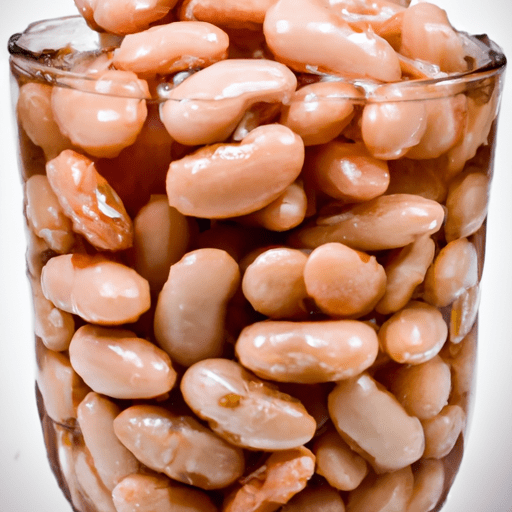The Versatile and Nutritious Canned Lima Beans
When it comes to versatile and nutritious ingredients, canned lima beans deserve a place in your pantry. Often overlooked, these little gems offer a delightful taste, a wide range of culinary uses, and numerous health benefits. In this blog post, we’ll explore the world of canned lima beans, from their taste and common uses in cooking to their impressive nutritional profile and interesting history.
A Taste Like No Other
Canned lima beans have a distinct taste that pairs well with a variety of flavors. They have a delicate yet slightly buttery flavor that is subtly sweet. The creamy texture of canned lima beans makes them a perfect addition to soups, stews, salads, and even dips. Their mild taste allows them to absorb the flavors of herbs and spices, making them a versatile ingredient in a wide range of recipes.
Common Uses in Cooking
Canned lima beans are a kitchen staple with their ability to enhance many dishes. Here are some popular ways to use them:
Soups and Stews: Add canned lima beans to your favorite soups and stews for added creaminess and flavor. They blend well with hearty ingredients such as tomatoes, carrots, and potatoes.
Salads: Toss canned lima beans into your salads to bring a protein-packed punch. They add both texture and taste to green salads, grain salads, and even pasta salads.
Dips and Spreads: Mash canned lima beans with olive oil, garlic, and lemon juice for a nutritious and flavorful dip. This smooth and creamy dip is perfect for serving with fresh vegetables or pita bread.
Sides and Casseroles: Use canned lima beans as a delicious side dish, or incorporate them into casseroles for a burst of protein. They pair well with roasted vegetables, grains, and meats.
Nutritional Powerhouse
Canned lima beans are not only delicious but also highly nutritious. They offer a multitude of health benefits, making them an excellent addition to any meal. Here are some key nutritional highlights:
Protein: Canned lima beans are an excellent source of plant-based protein, making them a great option for vegetarians and vegans. A one-cup serving provides approximately 15 grams of protein.
Fiber: These beans are rich in dietary fiber, which aids in digestion and helps maintain a healthy digestive system. Fiber also promotes satiety, making you feel fuller for longer periods.
Vitamins and Minerals: Canned lima beans are packed with essential vitamins and minerals like iron, folate, magnesium, and potassium. These nutrients contribute to overall health and well-being.
Low in Fat: Canned lima beans are low in fat and contain no cholesterol, making them a heart-healthy choice. Their fat content primarily consists of healthy fats, including omega-3 fatty acids.
Historical Insight
Lima beans, also known as butter beans, have a long and interesting history. They are believed to have originated in Central and South America and have been cultivated for thousands of years. Lima beans made their way to Europe during the 16th century, where they gained popularity as a nutritious crop.
Interestingly, their name “lima” comes from Lima, the capital city of Peru, where they were initially discovered by European explorers. Today, lima beans are grown worldwide, with different varieties and preparations found in various cuisines.
Canned lima beans are a versatile and nutritious ingredient that deserves a place in your culinary repertoire. Their mild taste, creamy texture, and numerous health benefits make them a valuable addition to any dish. From hearty soups to nutrient-packed salads, these beans can elevate your meals in exciting and tasty ways. So, why not open a can of lima beans today and embark on a delicious culinary adventure? Your taste buds and your body will thank you!
Canned Lima Beans
Origin and History
- Lima beans, also known as butter beans, are believed to have originated in South America, specifically in the region that is now Peru.
- They were widely cultivated by the Incas and were one of the primary staple crops in their diet.
Common Uses
- Canned lima beans are commonly used as an ingredient in various recipes, including soups, stews, casseroles, and salads.
- They can also be mashed and used as a side dish or added to dips and spreads.
Nutritional Benefits
- Lima beans are an excellent source of dietary fiber, which promotes digestive health and helps regulate blood sugar levels.
- They are a good source of plant-based protein, making them a valuable addition to vegetarian and vegan diets.
- Canned lima beans are also rich in essential minerals such as potassium, magnesium, and iron.
- They contain vitamins like thiamine (B1), folate (B9), and vitamin K.
Unique Properties and Historical Significance
- Lima beans have a distinctive creamy texture and a delicate, buttery flavor.
- Native Americans and early European settlers recognized the nutritional value of lima beans and incorporated them into their diets.
- During World War II, canned lima beans were often distributed as part of military rations due to their long shelf life and nutritional content.
Please note that while canned lima beans are convenient, fresh or frozen lima beans may retain more of their nutritional value.




Use the share button below if you liked it.
It makes me smile, when I see it.